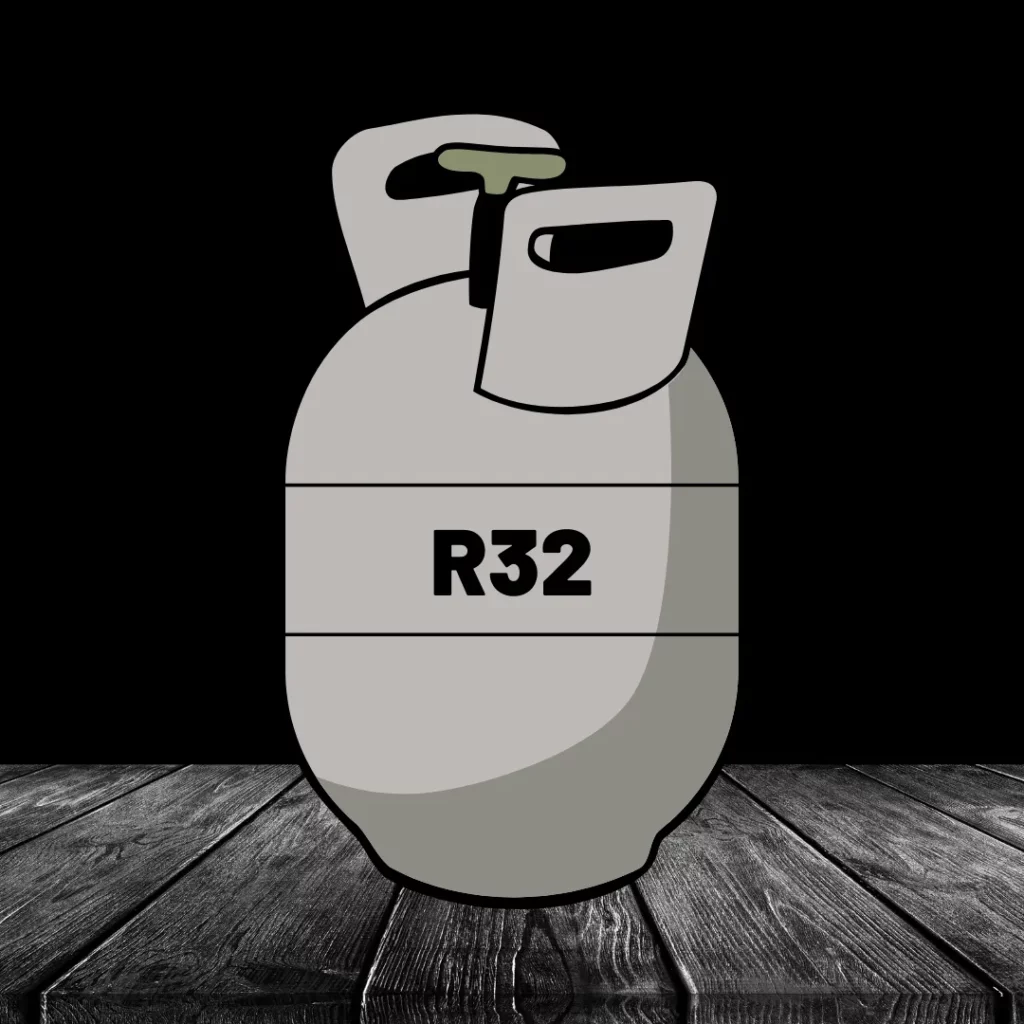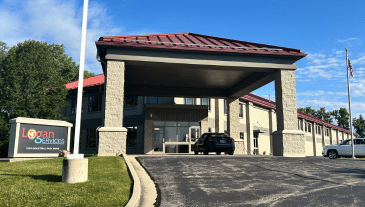As governments worldwide work to phase out hydrofluorocarbons (HFCs) to reduce their environmental impact, a new refrigerant has emerged as a potential replacement: R32.
But what exactly is R32 refrigerant, and what are its benefits and potential drawbacks?
In this article, we explore everything you need to know about R32 refrigerant.
Understanding R32 Refrigerant
What is R32 Refrigerant?
R32 Refrigerant, also known as difluoromethane (CH2F2), is a refrigerant used in air conditioners and other cooling systems. It is a more environmentally friendly alternative to traditional refrigerants, with what is said to have a lower global warming potential (GWP) and a shorter atmospheric lifetime. As a result, the use of R32 Refrigerant has been gaining traction in achieving customer satisfaction while reducing the environmental impact of air conditioning systems.
Chemical Properties and Composition
Difluoromethane is a colorless, odorless, and non-flammable gas that has been classified as an A2L, or mildly flammable, refrigerant by ASHRAE. It has a critical temperature of 78.2°C, a critical pressure of 5.808 MPa, and presents low toxicity levels. Due to these properties, R32 Refrigerant is considered safe to handle and use in most air conditioning applications.
R32 in Comparison to Other Refrigerants
When compared to other refrigerants, R32 Refrigerant demonstrates several advantages in terms of performance and environmental impact. For instance, R32 has a GWP score of 675, which is significantly lower than that of R410A refrigerant (with a GWP of 2088). The lower GWP of R32 allows air conditioners using this refrigerant to have a reduced impact on our carbon footprint. Additionally, R32 exhibits excellent thermodynamic properties, leading to higher energy efficiency and better performance in air conditioning systems.
Benefits and Advantages of R32
High Energy Efficiency
The use of R32 Refrigerant in air conditioners is known to yield high levels of energy efficiency. This efficiency can be attributed to the impressive thermodynamic properties of R32, which allow for improved heat transfer performance and reduced energy consumption. When R32 is used in air conditioning systems, its superior performance may often increases Energy Star ratings and compliance with energy efficiency standards.
Lower Environmental Impact
Another advantage of R32 Refrigerant is its reduced environmental impact, which directly contributes to protecting our ozone. R32’s comparatively low GWP of 675 makes it a more environmentally-friendly choice than traditional refrigerants like R410A. Moreover, its shorter atmospheric lifetime means that any released R32 is less likely to persist in the atmosphere and cause harm.
Cost-Effective and Easy to Use
R32 Refrigerant is also known for its cost-effectiveness and ease of use due to its compatibility with a wide range of air conditioning system designs and its simplified manufacturing and recycling processes. Having a single component composition, R32 is easier to produce, handle, and recycle, leading to reduced maintenance and operational costs for both manufacturers and consumers. In addition, training HVAC professionals on the safe handling, maintenance, and repair of R32 systems is relatively straightforward, further contributing to the cost-effectiveness and accessibility of this refrigerant.

Potential Drawbacks of R32
Despite the growing popularity of R32 refrigerants, there are some potential drawbacks associated with its use. These include flammability and safety concerns and retrofitting and compatibility issues.

Flammability and Safety Concerns
One of the primary concerns about R32 refrigerant is its flammability. The refrigerant belongs to the A2L classification, meaning it has a low-level flame potential. While this may not be a significant issue in controlled environments such as an innovation center, it is still a concern for household and commercial air conditioner users. Proper installation, maintenance, and usage of air conditioners that use R32 refrigerant can mitigate these risks significantly.
Industry professionals have been consistently working together to address these safety concerns through stakeholder engagement, minimizing the environmental impact of this refrigerant. For instance, extensive safety tests have been conducted in wind tunnels to better understand the flammability potential of R32 in various scenarios and inform safety measures that are being put into place.
Retrofitting and Compatibility Issues
Another potential drawback of R32 refrigerants is retrofitting and compatibility issues with older air conditioning systems. Some air conditioners may not be compatible with R32 refrigerant due to differences in operating pressure and component types. It is essential to consult technical assistance from the manufacturer or a certified professional before attempting any retrofit or replacement.
Future Outlook of R32 Refrigerant
Looking toward the future, the use of R32 refrigerant in air conditioners is expected to continue to grow. This is primarily because of its lower environmental impact than other refrigerants, thus providing a more environmentally friendly option. Furthermore, advancements in safety measures and best practices will continue to evolve as industry leaders collaborate on improving the flammability of R32.
Moreover, environmental regulations, such as the Montreal Protocol, will continue to encourage usage of less harmful refrigerants like R32. This transition will likely be supported by increased government regulations, incentives, and technological innovation. Consequently, customer satisfaction will become increasingly linked to sustainable air conditioning choices, making the R32 refrigerant a popular choice among environmentally conscious customers.
About Logan Services A/C, Heat & Plumbing
Whether you’re looking to upgrade your AC unit, need maintenance work done, or need dependable AC repair, Logan has you covered. Logan Services A/C, Heat & Plumbing has served Ohio residents for over 50 years with outstanding customer service, unparalleled technical experience, and quality work on every job. We carry top industry brands like Trane and Mitsubishi Electric and can professionally install your unit so it’s efficient, up to date with the latest practices, and lasts for years with optimal performance.
Contact us today and let us know how we can help you.
FAQs R32 Refrigerant
Is R32 refrigerant safe to use?
R32 refrigerant is classified as a mildly flammable A2L refrigerant. Although there are some safety concerns due to its flammability, with proper installation, usage, and maintenance, risks can be minimized.
Can I retrofit my existing air conditioner to use R32 refrigerant?
Retrofitting an air conditioner to use R32 refrigerant may be possible, but not cost-effective. It is essential to consult a certified professional or the manufacturer for assistance and consider potential warranty voids and performance impacts when considering this over system replacement.
How does R32 refrigerant contribute to environmental sustainability?
R32 refrigerant has a lower environmental threat potential compared to many other common refrigerants. This means that using it in air conditioners contributes to a smaller carbon footprint.
What measures are being taken to improve the safety of R32 refrigerant?
The industry is actively conducting research, such as wind tunnel tests, to better understand the flammability and safety concerns of R32 refrigerant. Manufacturers are also continually working on innovations and best practices to minimize safety risks associated with its use.





















